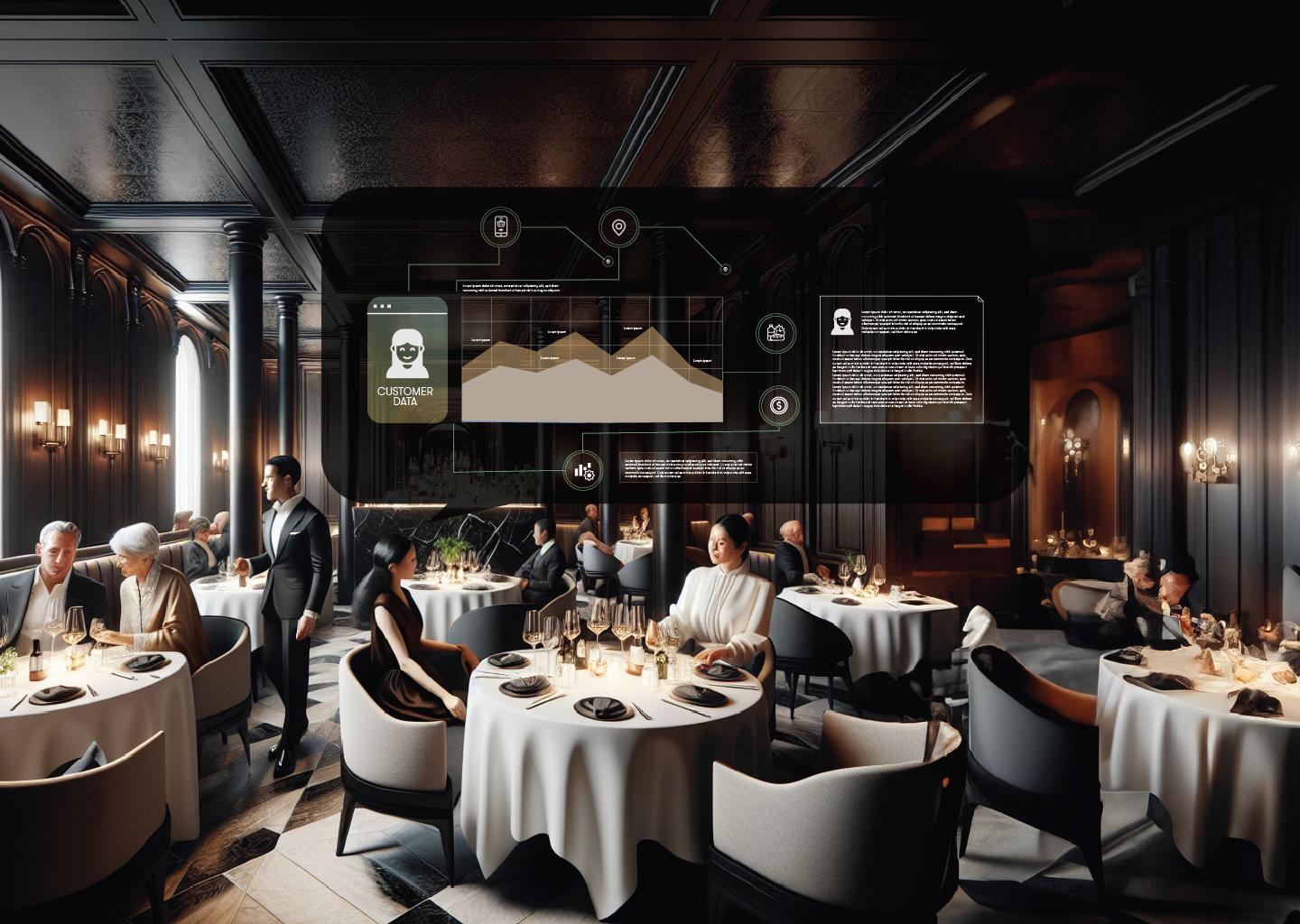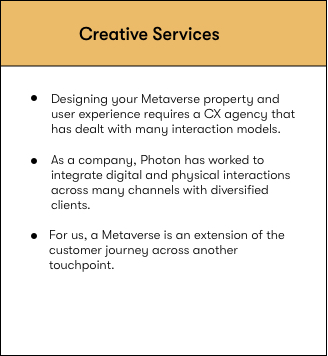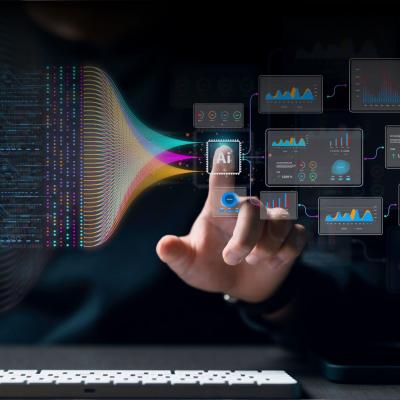Running a restaurant has never been easy, but today’s challenges feel tougher than ever. Rising food and labor costs, supply chain disruptions, and ever-evolving consumer preferences are putting enormous pressure on restaurant operators. At the same time, the demand for seamless, hyper-personalized dining experiences continues to grow, pushing brands to rethink their approach to efficiency, technology, and guest engagement.
Restaurant Revolution: Untangling AI & Automation for your Restaurant's Future
Restaurants face rising costs, inefficiencies, and evolving demands. AI & automation are the game-changers—boosting efficiency, personalizing experiences, and driving profits. Discover how!
While some restaurants struggle to keep up with outdated systems and disconnected technologies, others are leveraging AI and automation to work smarter, not harder. From automating inventory and labor management to delivering data-driven menu recommendations, restaurants are now using AI to drive operational excellence and customer satisfaction. The big question is: what does this shift really look like in practice, and how can restaurants implement these changes in a way that actually works?
A recent survey of over 1,000 digital-first engineers from Photon sheds light on the future of retail and restaurant technology. When asked, “As you envision the best-in-class Retail & Restaurant tech stack of the future, which capability will be most essential?” The responses highlight the key areas shaping the industry’s transformation.

Why Traditional Systems Might be Holding You Back
Think about this: How much time do your staff spend managing tasks that could easily be automated? Manual scheduling, updating inventory, and juggling multiple apps for delivery and reservations not only slow things down but also leave room for error. Here are just a few of the headaches caused by outdated systems:
- Staffing nightmares: Without real-time insights into demand, you either have too many staff standing around or not enough during busy shifts.
- Frustrated guests: Long waits, wrong orders, and clunky payment processes aren’t winning you any fans.
- Lost opportunities: If your systems don’t integrate, you’re missing out on upsell opportunities and personalized loyalty programs that keep customers coming back.
Patchwork fixes might feel like a quick win, but they only create more problems down the line. It’s time to leave the bandaids behind and embrace a cohesive, scalable strategy.
Here’s How AI and Automation Can Turn the Tide
AI and automation are no longer futuristic buzzwords—they’re the secret sauce to running a smarter, more efficient restaurant. Here’s how they can make a difference:
1. Eliminating the Tech Spaghetti
Picture this: A single system that seamlessly connects your POS, kitchen displays, delivery platforms, and loyalty programs. That’s what AI-powered solutions bring to the table. No more jumping between apps or losing track of inventory. Everything works together in real-time, giving you a clear view of your operations and guests.
2. Streamlining Operations
Imagine if your staff could spend less time on repetitive tasks and more time enhancing the guest experience. Automation can:
- Optimize staffing: AI-driven scheduling tools ensure you have just the right number of staff based on real-time demand.
- Simplify food prep: Robots can handle labor-intensive tasks like slicing, dicing, and portioning, freeing up your team to focus on quality and creativity.
- Tighten inventory control: Predictive analytics help you stock what you need and cut down on waste.
3. Making Every Guest Feel Special
Here’s where AI truly shines: creating personalized experiences that keep guests coming back. Think tailored menu recommendations, frictionless ordering via QR codes, and loyalty programs that feel like they were made just for them. The result? Happier customers and higher check averages.
4. Delivering Real Results
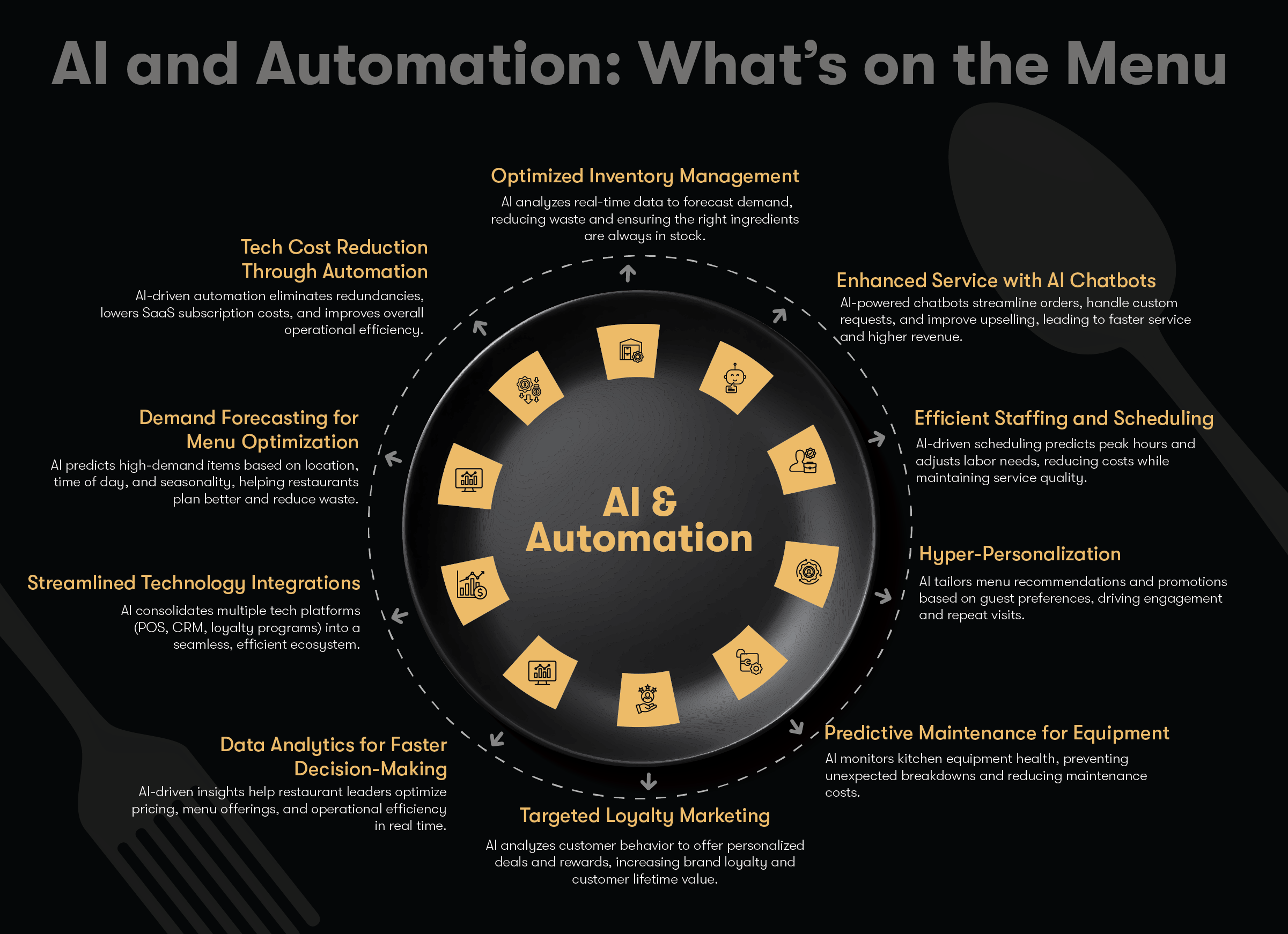
How Hyper-Personalization Enhances Customer Experience in Restaurants
Hyper-personalization in the restaurant industry refers to the use of advanced data analytics, AI, and customer insights to create highly tailored dining experiences that meet individual customer preferences. This approach goes beyond basic personalization by leveraging real-time data to enhance every aspect of the customer journey, ultimately leading to improved satisfaction and loyalty.
Key Aspects of Hyper-Personalization
- Tailored Menu Recommendations: Restaurants utilize AI-driven systems to analyze past orders, dietary preferences, and even real-time feedback to suggest menu items that align with individual tastes. For example, Panera Bread’s MyPanera program uses AI to recommend dishes based on previous purchases, making the ordering process quicker and more enjoyable.
- Customized Dining Experiences: By collecting data on customer preferences regarding food choices, dietary restrictions, and previous interactions, restaurants can customize not only the menu but also the service style and ambiance. This creates a more engaging environment that resonates with individual guests.
- Dynamic Pricing Strategies: AI enables restaurants to implement dynamic pricing models that adjust based on factors like demand and time of day. This flexibility can enhance customer satisfaction by offering personalized pricing that reflects their purchasing habits and preferences.
- Enhanced Loyalty Programs: AI-driven loyalty programs analyze customer behaviors to provide tailored rewards and promotions. For instance, Starbucks uses predictive analytics to deliver personalized offers based on purchasing habits, fostering deeper connections with customers.
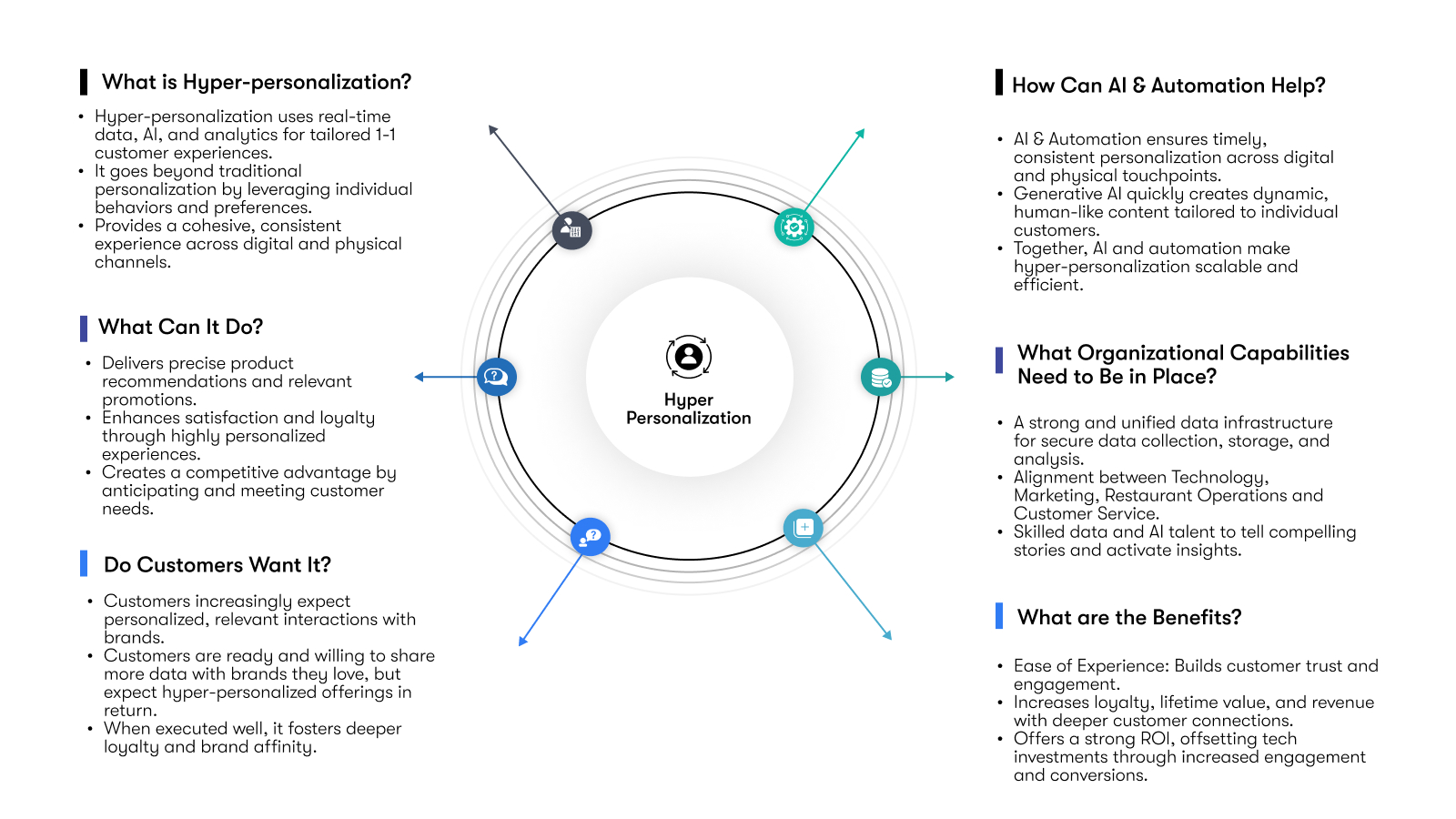
Benefits of Hyper-Personalization
Increased Customer Satisfaction: By providing exactly what customers want at the right time, hyper-personalization leads to higher satisfaction levels. Guests feel valued and understood when their unique preferences are recognized and catered to.
- Higher Sales and Order Accuracy: Personalized recommendations can lead to increased average order values as customers are more likely to try suggested items that align with their tastes. Additionally, hyper-personalization reduces order errors by allowing customers to specify their preferences in detail.
- Improved Customer Loyalty: When customers consistently receive tailored experiences that meet their expectations, they are more likely to return. This loyalty translates into repeat business and positive word-of-mouth referrals, which are crucial for restaurant success.
- Operational Efficiency: Hyper-personalization allows restaurants to optimize operations by predicting demand and managing inventory effectively. This not only enhances the dining experience but also reduces waste and operational costs.
Ready to Take the Next Step?
The way we dine is changing, and your restaurant has the chance to lead the charge. By integrating your systems, automating time-consuming tasks, and delivering personalized experiences, you can not only meet but exceed the expectations of today’s diners.
It’s time to stop playing catch-up and start shaping the future. AI and automation aren’t just tools—they’re your ticket to creating a smarter, more profitable restaurant. Let’s get started.
“Embracing AI & Automation in the restaurant industry isn't just about adopting new technology; it's about re- imagining the dining experience to anticipate and adapt to guests' unique preferences in real time. Transforming each interaction blends the core ingredients of personalized insight, efficiency, and culinary delight into a unique 'dish' made for the customer. This revolution allows our clients to see beyond just serving food to creating memorable, curated experiences that keep their guests coming back.”
Mukund Balasubramanian
Co-founder & CTO, Photon

